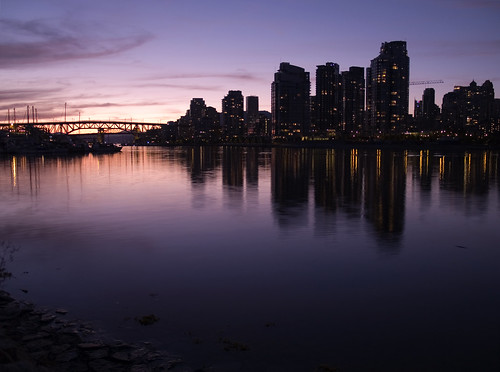What Photography Gear Do I Use?
How important is the photographer's camera and gear? Ken Rockwell does a great job showing why the the camera doesn't matter. It's the photographer's talent that counts. Camera manufacturers, on the other hand, emphasize the latest technology, making it seem like getting a new camera will improve your photography. My view is that the camera, lenses and accessories are only tools. Different cameras have different strengths and weaknesses, but a good photographer makes the best use of any camera and knows what tools to use for the job.
I love having the flexibility to get the shot under any conditions. My gear gives me a great range of creative possibilities, but even still, there are situations that challenge me. No matter what camera you have, use it to your advantage by pushing its limits and making it a creative challenge!
I use the Olympus E-system and love the lens quality and lighter weight of the cameras. Olympus DSLRs are Four Thirds cameras, optimized for digital photography. Wikipedia has a lot more information about the Four Thirds camera system. The sensor size is a little smaller than the APS-C sensors used by Canon, Nikon, Pentax, Sony and others. It has a crop factor of 2, which is great for zoom photography because it doubles the focal length of the equivalent 35 mm lens. The downside is that it's not so good for wide angle. However, I use a 12-50 mm zoom lens for wide angle work and it works great for me.
Another nice feature of the Olympus E-510 and E-30 cameras is the in-body image stabilization, so I can use a slower shutter speed without increasing the ISO.
The Olympus E-30 is my primary camera and the E-510 is my backup. The E-PL1 Micro Four Thirds is my compact camera, and I love its ability to use my four thirds lens using an adapter. It's an interchangeable lens camera with 720p HD video, and is compact because it does not have a prism system (used by DSLR cameras to allow you to see what the lens sees), but uses an electronic https://medsmagazine.com/generic-cialis-online/ viewfinder instead. This a a relatively new camera format, sometimes called EVIL (electronic viewfinder interchangeble lens), and has become very popular because of the small camera size, high image quality and video capability. These are great cameras for travel and street photography.
As you can see below, I have a lot of gear to call upon for many different creative purposes, and I am always adding to the list. Do I think I will get more gear in the future? Of course! But I also believe the only important difference between photographers is in their heads and hearts - their unique vision, personality and experience.
My Gear:
DLSR camera bodies:
Olympus E-500 8 MP
Olympus E-510 10 MP
Olympus E-30 12 MP DSLR
DLSR lenses:
Olympus Digital Zuiko 14-45mm f/3.5/5.6
Olympus Digital Zuiko 40-150mm f/3.5/4.5
Olympus Digital Zuiko 35mm f/3.5 macro
Olympus Digital Zuiko 50-200mm f/2.8/3.5
Sigma 30 mm f/1.4 prime lens
Olympus ED SWD Digital Zuiko 12-60mm f/2.8-4
Interchangeable Lens Digital Cameras
Olympus E-PL1 micro 4/3 12 MP
Micro 4/3 lenses
Olympus M.Zuiko Digital 14-42 mm f/3.5-5.6 zoom
Flash:
Olympus FL-50
CyberSync transmitter and receivers
Pair of Pocket Wizard II
4 White Lightning X series monohead strobes
Compact Digital Camera:
Canon Power Shot G9 12 MP with underwater case
Light modifiers
5-in-1 collapsible reflector
2 large softboxes
Stripbox
Beauty Dish
Convertible umbrellas - reflector and shoot-through
DIY light panel
Snoot, grids, barndoors
Variety of coloured and neutral density gels
Miscellaneous
Manfrotto tripod with ball head
Fog machine
Blacklights
Halogen Work Light
Sekonic Light Meter
Olympus RM-1 remote
Olympus CB-05 hotshoe TTL cable
Vagabond remote power battery pack
Flash bracket
Background and light stands
Printer
Canon PixmaPro 9500 photo printer
Film cameras, lenses and accessories:
I do have a list of gear that I would love to get when I have the opportunity or need ![]()
Wish list:
Olympus 7-14mm wide angle lens - great for landscapes
Olympus 8mm fisheye lens - specialty lens for funky looks
Lensbaby Composer - for selective focus effects
Olympus E-5 DSLR - top of the line Olympus DSLR with HD video
Olympus 50mm f/2.0 lens - nice fast lens
Alien Bee ring flash - for fashion
Underwater housing for Olympus E-PL1 - for underwater fashion photography
Olympus FL-50R wireless flash units - portable TTL flash system
Spiderlite continuous lighting system - for video and still photography





































